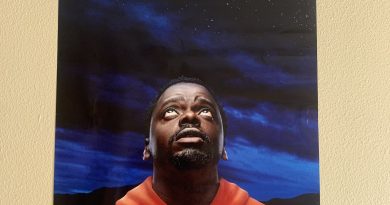Bilingual stories from Oaxaca to Humboldt
As vibrant as the blossoms of a cactus flower, microstories unfolded into vivid narratives, captivating listeners in Humboldt. On Sept. 17 – 19 community members and students gathered for the unique opportunity to hear bilingual microstories from the authors and editors of the published anthology, “Oaxaca y más allá.”
Originally published by Humboldt Press in 2023, it is compiled of 36 microstories that “presents a slice of the rich artistic creativity flourishing in this southern state of Mexico,” from the book’s summary.
“There is always an opportunity to get a story out of something, an object, a moment, or a person…it could be a microstory,” said Gayne Rodriguez Guzman, a writer originally from Mexico City who has lived in Oaxaca since 2006.
Her work focuses on healing and uplifting women’s voices as storytellers. In an interview with El Leñador, she highlighted the underrepresentation of women authors in Oaxaca, explaining that most of her work focuses on creating spaces to elevate women’s storytelling.
There are a total of 17 authors for “Oaxaca and beyond”—eight women and nine men.

The front cover of “Oaxaca y más allá” serves as a visual representation of women and Indigenous cultures in Oaxaca.
“The cover honors Afro-mexicana influence with a photo of Tia Chona who is from La Costa Chica. Many African slaves found refuge on the coast of Oaxaca during emancipation,” said co-editor of the anthology, James Ephraim Gaasch.
Six out of the 17 authors were hosted by Cal Poly Humboldt and Northtown Books in Arcata to celebrate their diverse backgrounds and provide them with a space to share their work.
Authors and editors traveled from regions ranging from Oregon all the way to La Costa Chica, located in Oaxaca, Mexico.
Originally from San Martín Tilcajete, Oaxaca and now living in California; author Lamberto Roque Hernández shared how indigeneity shows up in his work and his life.
“Being indigenous is conserving it but also opening up to the world because if we put ourselves in a box then we end up selling a product instead,” Roque Hernández said.
Representation is a central theme in the anthology which captures the essence of a culture rooted in resilience, generosity, and a deep connection to the natural world.
“I cannot speak definitively on the topic because I haven’t lived the same experiences as an Indigenous community. But as a writer, I aim to preserve, value, and bring dignity to Indigenous stories and languages,” said Cuauhtémoc Peña Vásquez, a teacher and editor of 1450 Ediciones.
The importance of making these stories accessible to a broader audience was a key theme throughout the events.
“Where I was born, storytelling was initially an oral tradition, not a written one,” said author Manuel Matus Manzo.
Matus Manzo’s parents did not learn to read or write, he was raised on mythical stories told by his uncle in the Zapotec language. Through these tales, he learned about origins of life and the ways different gods and goddesses would transform into animals which shaped his sense of agency and identity.
“How we write those elements doesn’t matter whether it’s in Spanish or not,” Matus Manzo said.
The collection of stories in “Oaxaca y más allá” exemplifies these efforts by providing page by page translation of stories between English, Spanish, and one in the Zapotec language.
For many audience members, hearing Zapotec spoken aloud was especially poignant, as it rekindled memories of the language their grandparents and great grandparents once spoke.
Seeing oneself reflected in these stories creates a powerful experience. The collaboration, trust, and dedication that goes into sharing these narratives make such events feel significant, offering new interpretations of cultures both near and far. These authors brought a touch of light to Humboldt, connecting our forests with the forests of the Sierra Madre in Oaxaca, and reminding us of the shared human experience.




